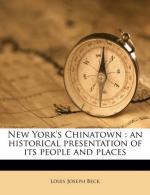|
This section contains 1,010 words (approx. 4 pages at 300 words per page) |

|
Metal Arts. By the Tang dynasty (618-907), Chinese metal art—especially engraved gold or silver objects—had become elaborate and exquisite. Metal ornaments and utensils with elegant and colorful decoration were produced. Bronze mirrors became smooth and shiny, and their backs were decorated with gold and silver relief or inlay. Designs for these mirrors included clouds and dragons, flying horses, grapevines, hunting scenes, flowers, and polo players. The technology for making metal sculpture developed during the Song dynasty (960-1279). The twentyfour- meter-tall Buddha in Guanyin Hall at the Duleshi (Temple of Lonely Happiness) in Jixian County, Hebei Province, is the largest bronze figure made in imperial China. Its body proportions are balanced, and the lines of its drapery are smooth. Cloisonne enamel was the greatest product of the Ming period (1368-1644). Thin brass wires were welded to bronze to form various designs...
|
This section contains 1,010 words (approx. 4 pages at 300 words per page) |

|




